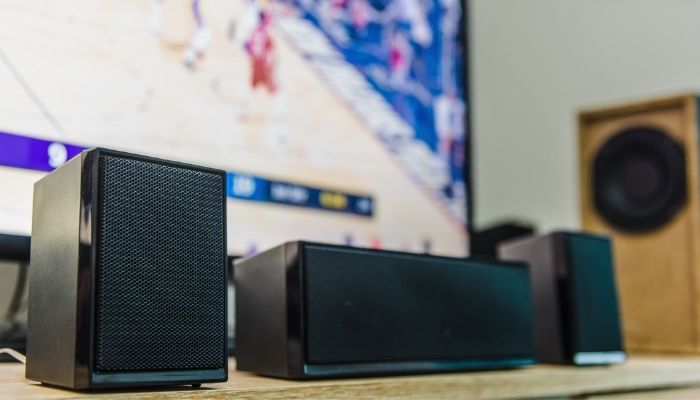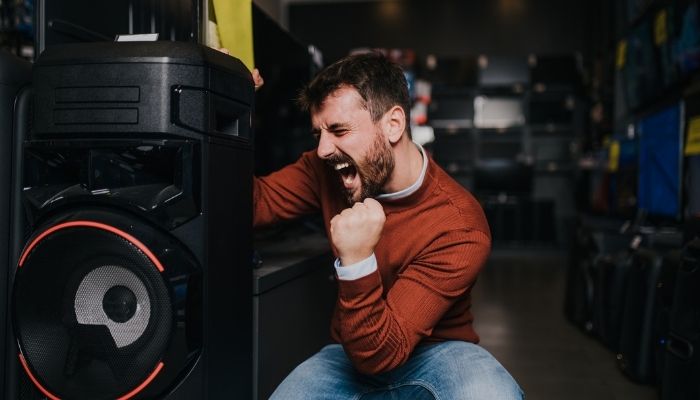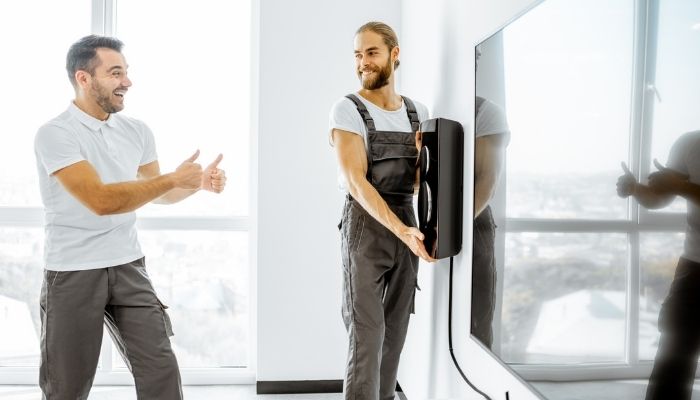In a home setting, a subwoofer can help fill out the sound of smaller or lower-quality speakers. It’s a companion to your home audio, not the main attraction. But it’s not just about adding more bass when you get a subwoofer. A well-matched subwoofer will dramatically improve your system’s overall sound.

They’re also great for computer gaming, video, and music production because they help increase your system’s range, giving you a more immersive experience. And if you’re shopping for a subwoofer for your home theater – then lucky you, movie night is about to become even greater! However, if you’re still trying to figure out if a subwoofer is really for you, our experts have what you need to really find out.
What’s a Subwoofer?
Before you go down the rabbit-hole of home audio, you should know a subwoofer is a loudspeaker that handles lower frequencies, also known as bass. It’s a way to recreate the LFE (low-frequency effects), often known as the.1 in a 7.1 system. The brand or product determines how low or high a subwoofer can go.
Subwoofers are essential because most speakers in an audio or home theater system cannot reproduce all of the frequencies sent to them by your audio source especially if you’re trying to feel like you’re a part of a movie or trying to recreate a concert experience at home.

Types of Subwoofers
When you shop for subwoofers, you’ll find several different types available. But which do you really need?
Powered Subwoofers
Self-powered subwoofers are the most common, as they have an amplifier built-in. Powered subwoofers typically have volume (gain) and other controls independent of the home theater receiver. This type of subwoofer requires a connection to the receiver’s Sub output and its own power outlet.
Passive Subwoofers
A passive subwoofer is powered by an external amplifier in the same way as the other speakers in your system. When trying to employ a passive subwoofer in a home theater system, placing an external subwoofer amplifier between the passive subwoofer and the home theater receiver’s subwoofer preamp outputs is ideal. This configuration eliminates the need for the receiver to supply the subwoofer’s amplifier power.
Front-Firing and Down-Firing Subwoofers
Subwoofers that are front-firing (or side-firing) have a sound that comes from the side or front of the frame. Both methods produce similar outcomes. Because of the type of frequencies subwoofers produce, human ears can’t determine which way the sound is coming from. Front-firing subs are typically situated in the front of the room. Down-firing subs have the best results when situated in a corner or along a sidewall.

How to Choose Your Ideal Subwoofer?
With so many options, it can seem impossible to find the right subwoofer for your sound system. But don’t worry; there are simple essentials to look out for.
Power
When shopping for a subwoofer, remember: power (watt rating) doesn’t always equal louder when it comes to subwoofers. The watt rating is a general estimate of how loud a subwoofer can go; that doesn’t mean it has to be that loud, though. In fact, some high-powered subwoofers sound better at “regular” volumes than lowered-powered ones do. So, don’t base your whole buying process on wattage unless that’s all you want in a subwoofer.
Driver Size
Driver size is also essential as it is the part of the speaker that makes sound. Essentially, the enclosure size of a subwoofer is determined by the driver size. For instance, a common-sized 12-inch driver will be inside a fairly decent size enclosure, while an 8-inch driver could have a smaller one.
It’s the driver that helps determine sound quality. So, as the size of the driver and cabinet shrinks, the power must increase significantly to compensate. For example, if it has more power, an 8-inch sub in a small enclosure could sound similar to a 12-inch sub in a big enclosure.
Enclosures
Subwoofer enclosures are divided into two categories: sealed and ported. Sealed enclosures (also known as acoustic suspension) are exactly what they sound like: they don’t let air in or out. This type is great for those who listen to classical or jazz music.
A built-in air vent in ported boxes (or bass reflex enclosures) helps reinforce low bass output. A ported enclosure will often produce a more powerful bass without requiring much power. This type is better for those who listen to EDM, hip-hop, or more bass-driven music. Keep in mind if you want a subwoofer in a particular spot or need to fill in a space, ported subwoofers are typically larger than sealed ones.
Location

Location, location, location; this can make or break your sound or at least the way you hear it. And, it’s an important consideration to think about before purchasing one. In short, putting your subwoofer against a wall will improve the sound, and so will putting it in a corner.
One way to find the perfect spot is to have someone move the sub while you sit in your preferred listening area. Alternatively, situate the sub in your listening position at ear level, then you can crawl around the wall until it sounds best. This way, you can further ensure the subwoofer does its job and keeps your tunes blasting how you like it.
You’ll know you found the right subwoofer when you hear more than just a thump-thump. Because a good subwoofer, placed correctly in a space, provides realistically deep sounds. And don’t worry if that’s not what you’re hearing; you might just need to find a new placement. Or it might be time to give Toton’s TV a call. After all, we’re the experts! So, if you need speakers, audio systems, amps, or other audio accessories, just stop by!